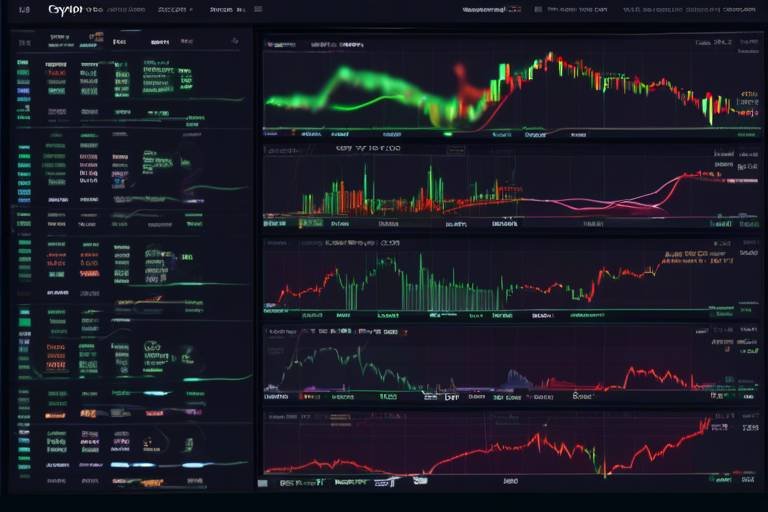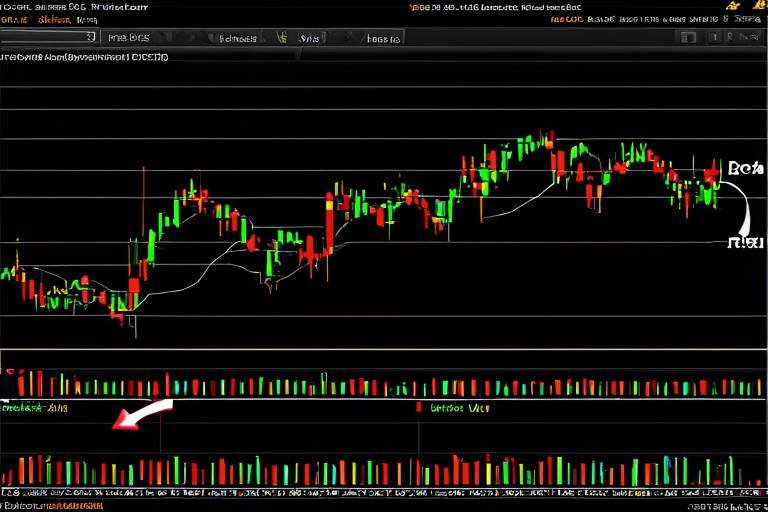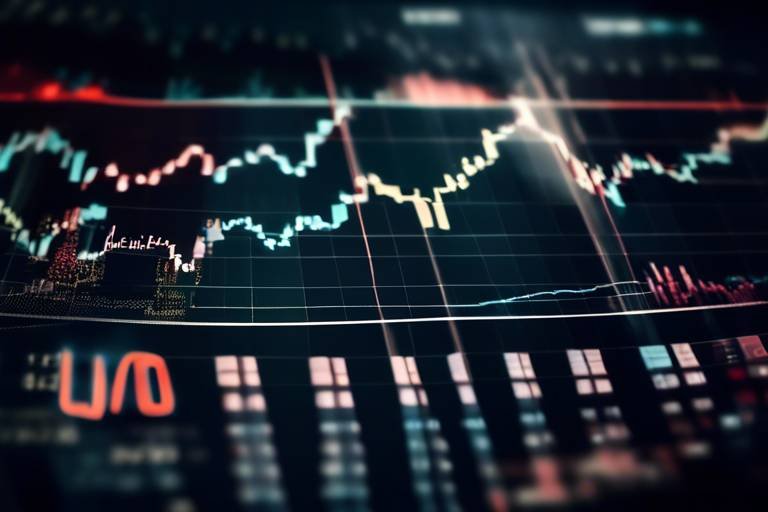The Role of Technical Analysis in Predicting Price Movements
In the ever-evolving landscape of financial markets, traders and investors constantly seek methods to gain an edge. One of the most widely embraced methodologies in this quest is technical analysis. But what exactly is it? At its core, technical analysis is the art and science of analyzing historical price data to forecast future price movements. It’s akin to a weather forecast for traders, helping them predict the market's next move based on past patterns and trends.
Imagine you're a detective, piecing together clues from a crime scene. Each price point, volume spike, and market trend represents a clue that can lead you to the truth about where the market is headed. This detective work is not just about guesswork; it’s grounded in data and mathematical calculations that help traders make informed decisions. The beauty of technical analysis lies in its ability to transform complex market behavior into understandable patterns, enabling traders to navigate the tumultuous waters of buying and selling.
As we delve deeper into the significance of technical analysis, it's essential to recognize its foundational principles. The primary assumption behind technical analysis is that all available information is reflected in the price. This means that market participants—traders, institutions, and investors—react to news and events, causing price movements that can be studied and predicted. Whether you're a day trader looking for quick profits or a long-term investor aiming to build wealth, understanding these principles can significantly enhance your trading strategy.
Moreover, technical analysis is not just a standalone tool; it is often combined with other methods, such as fundamental analysis, to create a more comprehensive trading strategy. By understanding both the quantitative aspects of price movements and the qualitative factors influencing those movements, traders can make more nuanced decisions. In the following sections, we will explore the key tools and methodologies that underpin technical analysis, providing you with a robust framework to enhance your trading acumen.
- What is technical analysis? Technical analysis is a method of evaluating securities by analyzing statistics generated by market activity, such as past prices and volume.
- How does technical analysis work? It works by identifying patterns and trends in historical price data to predict future price movements.
- Is technical analysis reliable? While it can provide valuable insights, it should be used in conjunction with other analysis methods for better accuracy.
- What are some common tools used in technical analysis? Common tools include price charts, technical indicators, and oscillators.

Understanding Technical Analysis
Technical analysis is a fascinating approach that traders and investors use to decipher the complex world of financial markets. At its core, it involves examining historical price data and market trends to predict future price movements. Imagine trying to read the weather by looking at past forecasts; that's somewhat akin to how technical analysis works. By analyzing price patterns, traders can make informed decisions about when to enter or exit a trade, much like a weather forecaster predicting sunny days or impending storms based on historical data.
The foundational principles of technical analysis are built on the belief that all relevant information is already reflected in the price of an asset. This means that market prices move according to the collective emotions, behaviors, and decisions of traders. By understanding these movements, one can gain valuable insights into potential future price actions. For instance, if many traders are optimistic about a stock's future, its price is likely to rise, while pessimism can lead to declines. This interplay of emotions and decisions is what makes technical analysis both an art and a science.
Moreover, technical analysis is not just a standalone practice; it's often used in conjunction with other forms of analysis, such as fundamental analysis, to create a more comprehensive trading strategy. While fundamental analysis focuses on a company's financial health and market conditions, technical analysis zooms in on price action and market sentiment. This dual approach can enhance a trader's ability to make sound decisions in a volatile market.
In essence, technical analysis serves as a powerful tool for traders looking to navigate the financial landscape. By understanding price movements and market trends, traders can develop strategies that align with their risk tolerance and investment goals. Whether you are a seasoned trader or just starting, grasping the fundamentals of technical analysis can significantly enhance your trading prowess.
In summary, technical analysis is not merely about charts and numbers; it's about understanding the psychology behind market movements. By studying historical price data, traders can predict future trends and make informed trading decisions, ultimately aiming for successful outcomes in their investment journeys.

Key Tools of Technical Analysis
When venturing into the world of trading, having the right tools at your disposal can make all the difference. Technical analysis is no exception. It employs a variety of tools that help traders dissect market data, identify trends, and make informed decisions. Understanding these tools is crucial for anyone looking to enhance their trading strategies and improve their chances of success. Let's dive into some of the most essential tools used in technical analysis.
One of the cornerstones of technical analysis is the use of charts. Charts serve as visual representations of price movements over time, allowing traders to spot patterns and trends that might not be immediately apparent from raw data. There are several types of charts, each with its unique advantages. For instance, line charts provide a straightforward view of price changes by connecting closing prices over a specified period. They are particularly useful for quickly assessing the general direction of a market without the clutter of additional data.
On the other hand, candlestick charts offer a more detailed perspective. Each candlestick represents a specific time frame and conveys four key pieces of information: the opening price, closing price, highest price, and lowest price during that period. This rich data allows traders to gauge market sentiment and potential reversals more effectively. For example, a series of bullish candlesticks could indicate strong buying pressure, while a series of bearish ones might signal selling pressure. Understanding these charts can provide critical insights into market dynamics.
Beyond charts, technical indicators play a vital role in technical analysis. These indicators are mathematical calculations based on price and volume data, designed to provide additional insights into market behavior. Some of the most popular indicators include:
- Moving Averages: These smooth out price data to identify trends over a specific period. They help traders determine whether a market is in an uptrend or downtrend.
- Relative Strength Index (RSI): This momentum oscillator measures the speed and change of price movements, helping traders identify overbought or oversold conditions.
- Bollinger Bands: These bands consist of a moving average and two standard deviations, providing insights into price volatility and potential price reversals.
Each of these indicators can be used in various combinations to create a robust trading strategy. For instance, a trader might use moving averages to identify the overall trend while employing the RSI to pinpoint optimal entry and exit points. This combination can significantly enhance the effectiveness of trading decisions.
In addition to charts and indicators, another critical tool in technical analysis is oscillators. These are indicators that fluctuate within a specific range, typically from 0 to 100. They are particularly useful in identifying potential reversal points in the market. Examples include the Stochastic Oscillator and the MACD (Moving Average Convergence Divergence). By incorporating oscillators into their analysis, traders can gain a better understanding of market momentum and make more informed decisions.
Ultimately, the key to successful technical analysis lies in understanding how to effectively use these tools in conjunction with one another. By combining charts, indicators, and oscillators, traders can develop a comprehensive view of market conditions and make more informed trading decisions. As you delve deeper into the world of technical analysis, remember that practice and experience are your best teachers. The more you engage with these tools, the better equipped you'll be to navigate the complexities of the financial markets.
Q1: What is the best tool for beginners in technical analysis?
A1: For beginners, line charts and moving averages are excellent starting points. They provide a clear view of price trends and help in understanding basic market movements.
Q2: Can technical analysis predict market crashes?
A2: While technical analysis can indicate potential market trends and reversals, it cannot predict unforeseen events that lead to market crashes. It is best used in conjunction with other analytical methods.
Q3: How often should I review my technical analysis tools?
A3: Regularly reviewing your tools is essential, especially after significant market movements or changes in your trading strategy. Staying updated will help you adapt to evolving market conditions.

Price Charts
Price charts are the backbone of technical analysis, acting as a visual representation of market movements over time. They allow traders to quickly grasp the dynamics of price fluctuations and make informed decisions. Imagine trying to navigate a river without a map; that’s what trading without price charts feels like. By studying these charts, traders can identify patterns, trends, and potential turning points in the market.
There are several types of price charts, each offering unique insights into market behavior. The three most commonly used types are line charts, bar charts, and candlestick charts. Each type serves a different purpose and can be more effective depending on the trader's strategy and the specific market conditions.
Line charts are the simplest form of price charts, connecting closing prices over a specified time frame. They provide a clear and straightforward view of price trends, making it easy for traders to spot overall movements. However, they lack the depth of information that other chart types offer. For instance, while line charts show the general direction of price movements, they don't provide insights into the volatility or trading volume, which can be crucial for making informed trading decisions.
On the other hand, candlestick charts offer a more detailed picture of price action. Each candlestick represents a specific time period and displays the opening, closing, high, and low prices. This structure allows traders to quickly assess market sentiment and volatility. For example, a long-bodied candlestick indicates strong buying or selling pressure, while a small-bodied candlestick suggests indecision among traders. The colors of the candlesticks (typically green for bullish and red for bearish) also convey additional information about market trends.
To illustrate the differences between these chart types, consider the following table:
| Chart Type | Advantages | Disadvantages |
|---|---|---|
| Line Chart | Simplistic view of price trends; easy to read | Lacks detail on volatility and trading volume |
| Candlestick Chart | Provides detailed price action; indicates market sentiment | Can be complex for beginners to interpret |
| Bar Chart | Shows opening, closing, high, and low prices; good for detailed analysis | Can be cluttered and hard to read for some traders |
In conclusion, understanding price charts is essential for any trader looking to navigate the financial markets effectively. Each chart type has its strengths and weaknesses, and the choice of which to use often depends on the individual trader's strategy and preferences. By mastering the art of reading price charts, traders can enhance their ability to predict price movements and make more informed trading decisions.

Line Charts
Line charts are one of the most straightforward and effective tools in the technical analysis arsenal. They offer a clear visual representation of price movements over time, connecting closing prices with a continuous line. This simplicity makes them particularly appealing to both novice and experienced traders alike. Imagine trying to navigate a winding road; a line chart serves as your map, guiding you through the twists and turns of market fluctuations.
One of the primary advantages of line charts is their ability to provide a quick snapshot of price trends. By focusing solely on closing prices, they eliminate the noise created by intraday price movements, allowing traders to concentrate on the overall direction of the market. This can be incredibly beneficial when making quick trading decisions. For instance, if you notice a consistent upward slope in a line chart, it could indicate a bullish trend, prompting you to consider buying.
However, while line charts are excellent for identifying trends, they do have their limitations. They do not provide information on the highs and lows of the price within a specific timeframe, which can be crucial for understanding market volatility. To illustrate, let’s compare line charts with other types of charts:
| Chart Type | Information Provided | Best For |
|---|---|---|
| Line Chart | Closing prices over time | Quick trend assessments |
| Bar Chart | Open, high, low, and close prices | Detailed price action analysis |
| Candlestick Chart | Open, high, low, and close prices with visual patterns | Identifying market sentiment and reversals |
When utilizing line charts, traders often combine them with other technical tools to enhance their analysis. For example, adding moving averages can help smooth out price data, making it easier to spot trends. This combination creates a more comprehensive view of market dynamics, allowing traders to make informed decisions.
In summary, line charts are a fundamental tool in technical analysis, offering clarity and simplicity. They are perfect for traders looking to quickly assess market trends without getting bogged down by excessive details. However, for a more complete analysis, it's essential to integrate them with other chart types and indicators. So, the next time you sit down to analyze a stock or currency pair, consider starting with a line chart as your foundation.
- What is a line chart? A line chart is a graphical representation of price movements over time, connecting closing prices with a continuous line.
- What are the advantages of using line charts? Line charts provide a clear and simple view of trends, focusing only on closing prices, which helps in quick assessments.
- How do line charts differ from candlestick charts? Unlike candlestick charts, which show open, high, low, and close prices, line charts only display closing prices, offering a more straightforward view of trends.
- Can I use line charts for day trading? Yes, line charts can be beneficial for day trading, especially when combined with other technical indicators for better decision-making.

Candlestick Charts
Candlestick charts are an essential tool in the trader's toolbox, providing a visually appealing and detailed representation of price movements within specific time frames. Unlike traditional line charts, which only connect closing prices, candlestick charts offer a wealth of information about the open, close, high, and low prices for a given period. This four-part structure allows traders to glean insights into market sentiment and potential price reversals at a glance.
Each candlestick consists of a body and two wicks (or shadows). The body represents the price range between the opening and closing prices, while the wicks extend from the body to indicate the highest and lowest prices during that period. If the closing price is higher than the opening price, the body is typically colored green or white, symbolizing bullish momentum. Conversely, if the closing price is lower, the body is often colored red or black, indicating bearish sentiment. This color coding is fundamental as it helps traders quickly assess market conditions.
One of the significant advantages of candlestick charts is their ability to reveal patterns that can signal future price movements. For instance, formations such as the "Doji," "Hammer," and "Engulfing" patterns can indicate potential reversals or continuations of trends. Understanding these patterns can be likened to reading the mood of a crowd; just as a trader can sense when excitement or fear is building in the market, they can interpret the signals that candlestick patterns provide.
Here's a quick overview of some common candlestick patterns:
| Pattern | Description |
|---|---|
| Doji | A candlestick with a small body, indicating indecision in the market. |
| Hammer | A bullish reversal pattern that occurs after a downtrend, characterized by a small body and a long lower wick. |
| Engulfing | A pattern where a larger body completely engulfs the previous candlestick, signaling a potential reversal. |
Moreover, candlestick charts can be used in conjunction with technical indicators to enhance trading strategies. For example, by applying moving averages or the Relative Strength Index (RSI) alongside candlestick patterns, traders can confirm signals and make more informed decisions. This combination of visual and numerical analysis creates a robust framework for understanding market dynamics.
In conclusion, candlestick charts are more than just a pretty picture; they are a powerful tool that provides traders with invaluable insights into market behavior. By mastering the art of reading candlestick patterns, traders can improve their ability to forecast price movements and make strategic trading decisions. So, the next time you look at a chart, take a moment to appreciate the story that each candlestick tells!
- What is the main advantage of using candlestick charts? Candlestick charts provide more information than traditional line charts by showing the open, close, high, and low prices in a single visual representation.
- How can I learn to read candlestick patterns? There are many resources available, including books, online courses, and tutorials that focus specifically on candlestick charting techniques.
- Can candlestick charts predict future price movements? While they provide valuable insights, no charting method can guarantee future price movements. Candlestick patterns should be used in conjunction with other analysis tools for better accuracy.
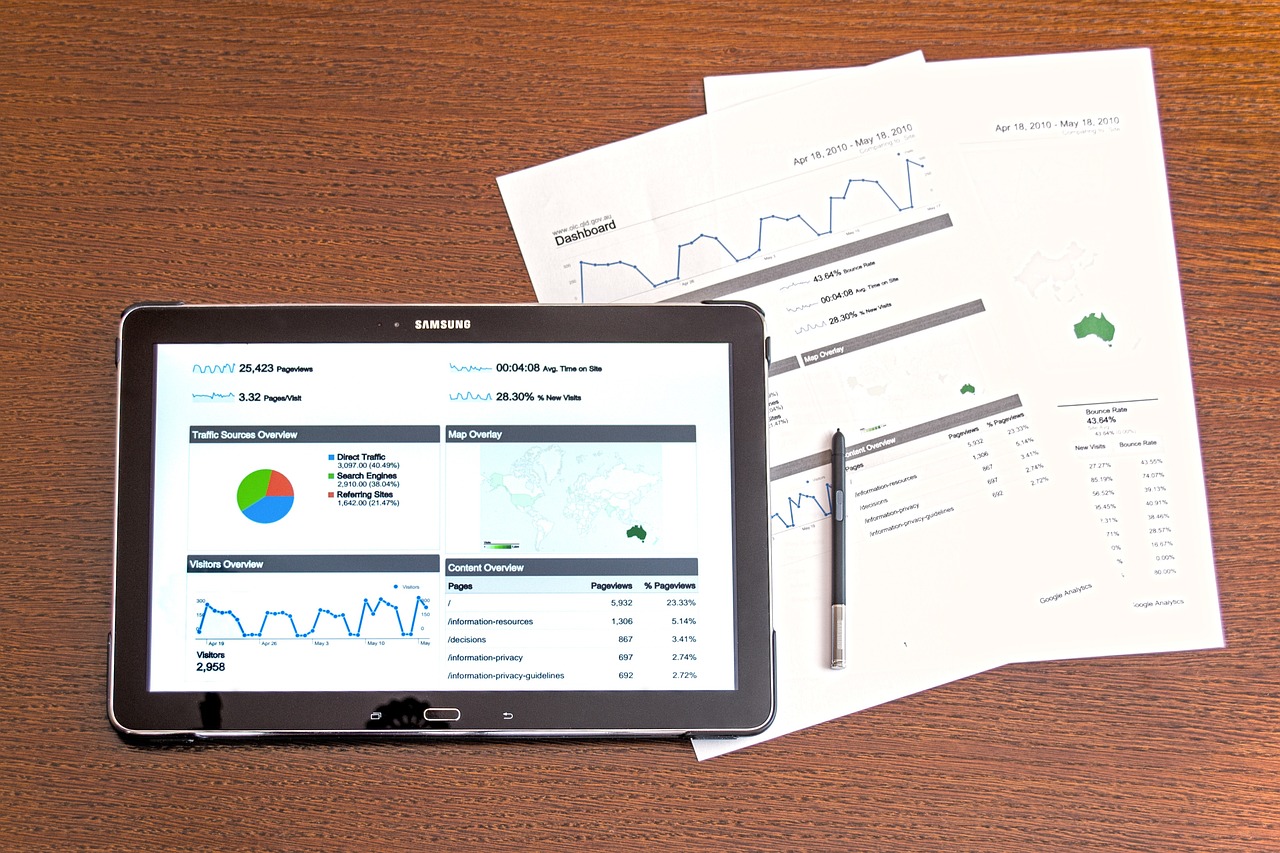
Technical Indicators
When diving into the world of technical analysis, one cannot overlook the significance of . These are essentially mathematical computations based on historical price and volume data, designed to provide traders with insights into market trends and potential price movements. Think of them as the tools in a mechanic's toolbox; each one serves a unique purpose, helping traders to diagnose the market's condition and make informed decisions.
Among the most popular technical indicators, you’ll find the Moving Average and the Relative Strength Index (RSI). Each of these indicators offers a different perspective on market behavior. For instance, the Moving Average smooths out price data to identify the direction of the trend over a specific period. It’s like looking at the road ahead through a clear windshield, allowing you to see where the market is likely headed without being distracted by every bump or curve. On the other hand, the RSI is a momentum oscillator that measures the speed and change of price movements. It can help traders identify overbought or oversold conditions, acting as a warning sign just like a dashboard light in your car indicating that something needs attention.
To further illustrate, let’s take a look at a simple comparison table of these two popular indicators:
| Indicator | Purpose | Timeframe |
|---|---|---|
| Moving Average | Smooths price data to identify trends | Short-term to Long-term |
| Relative Strength Index (RSI) | Measures momentum to identify overbought/oversold conditions | Short-term |
Using technical indicators effectively requires understanding their strengths and weaknesses. For example, while the Moving Average can help confirm a trend, it may lag behind price action, leading to potential missed opportunities. Conversely, the RSI can signal a reversal, but it may also produce false signals during strong trends. Thus, combining multiple indicators can often yield better results, much like a chef using various spices to create a well-balanced dish.
It's also essential to recognize that technical indicators are not foolproof. They should be used in conjunction with other analytical methods and market research. This holistic approach is crucial for effective trading. After all, relying solely on one indicator is like trying to navigate a ship with only one compass; you might get close, but you could easily veer off course.
In summary, technical indicators play a pivotal role in the realm of technical analysis, empowering traders to make informed decisions based on historical data. By understanding how to use these tools in tandem with market psychology and other analysis methods, traders can enhance their strategies and potentially increase their chances of success in the ever-evolving financial markets.

Market Psychology and Technical Analysis
Understanding market psychology is crucial when diving into the world of technical analysis. Why, you ask? Well, the financial markets are not just a cold, hard reflection of numbers; they are a living, breathing entity influenced by the emotions, fears, and hopes of traders. Each price movement tells a story, shaped by the collective sentiment of market participants. When traders are feeling optimistic, you might see prices surge, while a wave of fear can send prices plummeting. It's like a roller coaster ride, where the twists and turns are dictated by the emotional state of the riders!
One of the key elements of market psychology is the concept of fear and greed. These two emotions often drive market behavior more than any underlying economic fundamentals. For instance, during a bull market, the overwhelming sense of greed can lead traders to overlook potential risks, resulting in inflated asset prices. Conversely, in a bear market, fear can create a panic sell-off, where traders rush to liquidate their positions, further driving down prices. Understanding these psychological triggers can equip traders with the insight needed to navigate the market effectively.
Moreover, the concept of support and resistance levels plays a significant role in market psychology. These levels are not just numbers on a chart; they represent psychological barriers where traders collectively decide to buy or sell. For instance, if a stock consistently bounces back after hitting a certain price (support), it indicates that many traders believe the stock is undervalued at that level. On the flip side, if a stock struggles to break through a price ceiling (resistance), it shows that traders are hesitant to buy at higher prices. Recognizing these levels can help traders predict potential reversals or continuations in price trends.
Another fascinating aspect of market psychology is the phenomenon of herd behavior. Traders often look to others for cues on how to act, leading to trends that can amplify price movements. This can create scenarios where a stock's price rises simply because everyone else is buying, regardless of its actual value. It’s like watching a crowd at a concert; when one person starts cheering, others follow, creating a wave of excitement. In trading, this can lead to bubbles and crashes, making it essential for traders to develop their own strategies rather than blindly following the crowd.
To summarize, market psychology is a vital component of technical analysis that cannot be ignored. By understanding the emotional drivers behind price movements, traders can make more informed decisions. Remember, it's not just about the numbers; it's about the people behind those numbers. So, the next time you look at a chart, think about the emotions at play. Are traders feeling greedy? Fearful? Confident? These insights can be the key to unlocking successful trading strategies.
- What is market psychology? Market psychology refers to the collective emotions and sentiments of traders that influence their decisions and, consequently, market movements.
- How does fear and greed affect trading? Fear can lead to panic selling, while greed can result in irrational buying, both of which can create volatility in the markets.
- What are support and resistance levels? Support levels are price points where buying interest is strong enough to overcome selling pressure, while resistance levels are where selling interest is strong enough to overcome buying pressure.
- What is herd behavior in trading? Herd behavior occurs when traders follow the actions of others, often leading to trends that can result in market bubbles or crashes.

Support and Resistance Levels
Support and resistance levels are fundamental concepts in technical analysis, acting as psychological barriers that can influence price movements significantly. To put it simply, support is the price level at which a stock tends to stop falling and may even bounce back up, while resistance is the level at which a stock struggles to rise further, often reversing direction. These levels are not just arbitrary numbers; they are rooted in the collective behavior and sentiment of traders in the market.
Imagine a basketball game where the players are constantly trying to score points. The support level is like the basketball hoop—the point where the ball (or price) is likely to bounce back up when it hits the rim. Conversely, the resistance level acts like the ceiling of the gym; once the ball hits it, it’s unlikely to go higher without some significant force, just like the price struggles to surpass a resistance level without strong buying pressure.
Traders use these levels to make informed decisions. For instance, if a stock is approaching a support level, a trader might see this as a buying opportunity, anticipating that the price will rebound. On the other hand, if the price approaches a resistance level, it might be a signal to sell, as the price could reverse. This dynamic creates a self-fulfilling prophecy, as many traders will react similarly, reinforcing these levels.
| Level Type | Description | Example |
|---|---|---|
| Support | A price level where buying interest is strong enough to overcome selling pressure. | If a stock has historically bounced back at $50, that’s a support level. |
| Resistance | A price level where selling interest is strong enough to overcome buying pressure. | If a stock has struggled to break above $100, that’s a resistance level. |
Identifying these levels can be done through various methods. Traders often look at historical price charts to pinpoint where prices have previously reversed. Additionally, they may use tools like moving averages or Fibonacci retracement levels to enhance their analysis. However, it's important to remember that while these levels can provide guidance, they are not foolproof. Market conditions can change rapidly, and what was once a strong support or resistance level may no longer hold.
In conclusion, understanding support and resistance levels is crucial for any trader looking to navigate the financial markets effectively. By recognizing these levels, traders can better anticipate price movements and make more informed trading decisions, ultimately leading to improved outcomes in their trading strategies.
- What is the difference between support and resistance?
Support is where the price tends to stop falling and may bounce back up, while resistance is where the price tends to stop rising and may reverse direction. - How can I identify support and resistance levels?
You can identify these levels by analyzing historical price charts and observing where prices have previously reversed. - Are support and resistance levels always accurate?
No, while they provide valuable insights, market conditions can change, and levels may not always hold.

Trend Analysis
Trend analysis is a powerful tool that helps traders and investors identify the direction of market movements over time. By examining historical price data, traders can discern whether an asset is in an upward, downward, or sideways trend. This analysis is not just about recognizing patterns; it’s about understanding the underlying forces driving those patterns. Think of it as reading the mood of the market—are traders feeling optimistic or pessimistic? Are they ready to buy, or are they looking to sell? These insights can be crucial for making informed trading decisions.
To effectively analyze trends, traders often rely on various methods and tools. One popular approach is to use moving averages, which smooth out price data to help identify the overall direction of the market. For example, a simple moving average (SMA) calculates the average price over a specific period, while an exponential moving average (EMA) gives more weight to recent prices, making it more responsive to new information. By comparing different moving averages, traders can spot potential trend reversals and momentum shifts.
Another key aspect of trend analysis is recognizing the different types of trends:
- Uptrends: Characterized by higher highs and higher lows, indicating increasing demand.
- Downtrends: Defined by lower highs and lower lows, suggesting decreasing demand.
- Sideways Trends: Occur when prices move within a range, indicating market indecision.
Understanding these trends can help traders set their strategies effectively. For instance, in an uptrend, a trader might look for buying opportunities, while in a downtrend, they might consider short-selling. Additionally, recognizing sideways trends can prompt traders to adopt a more cautious approach, perhaps waiting for a breakout before committing to a position.
Furthermore, trend analysis is often enhanced by combining it with other technical indicators. For instance, traders might use the Relative Strength Index (RSI) alongside trend lines to confirm whether a trend is likely to continue or reverse. This combination of tools and indicators allows for a more nuanced understanding of market dynamics and can significantly improve trading outcomes.
In summary, trend analysis is not just about identifying where the price has been; it’s about forecasting where it might go next. By honing their skills in trend identification and analysis, traders can position themselves strategically in the market, making informed decisions that align with the prevailing market sentiment.
1. What is the primary purpose of trend analysis?
Trend analysis aims to identify the direction of price movements in the market, helping traders make informed decisions about buying or selling assets.
2. How can I identify an uptrend?
An uptrend is identified by a series of higher highs and higher lows in the price chart. Traders often use moving averages to confirm this direction.
3. Can trend analysis predict market crashes?
While trend analysis can indicate potential reversals or shifts in momentum, it cannot predict market crashes with certainty. It is essential to combine trend analysis with other analytical methods.
4. What tools are commonly used in trend analysis?
Common tools include moving averages, trend lines, and technical indicators like the RSI. These tools help traders visualize and confirm trends.
5. Is trend analysis effective for all types of trading?
Trend analysis is particularly effective for short-term trading strategies like day trading, but it can also provide insights for long-term investments.

Limitations of Technical Analysis
While technical analysis is a powerful tool for traders, it is crucial to recognize its limitations. One of the primary drawbacks is that it relies heavily on historical data. This means that past performance is not always indicative of future results. Just because a stock has followed a particular pattern in the past does not guarantee it will do so again. Market conditions can change rapidly due to unforeseen events, such as economic news or geopolitical tensions, which can render historical data less relevant.
Another limitation is the subjective nature of technical analysis. Different traders may interpret the same chart in various ways, leading to conflicting conclusions. For instance, one trader might see a bullish trend while another perceives a bearish reversal. This subjectivity can create confusion and uncertainty in decision-making, especially for novice traders who may lack the experience to draw accurate conclusions.
Moreover, technical analysis often overlooks fundamental factors that can significantly impact price movements. Factors such as earnings reports, company news, and macroeconomic indicators can drive prices in ways that technical indicators cannot predict. Relying solely on technical analysis without considering these fundamental aspects can lead to misguided trading decisions.
Additionally, the effectiveness of technical analysis can diminish in certain market conditions. For example, during periods of high volatility or low liquidity, price movements may become erratic, making it challenging for traders to rely on established patterns and indicators. In such cases, the signals generated by technical analysis may be less reliable, leading to potential losses.
Lastly, it is essential to recognize that technical analysis is not foolproof. Many traders fall into the trap of overanalyzing charts and indicators, leading to analysis paralysis. This occurs when traders become so fixated on finding the perfect entry or exit point that they miss opportunities or make hasty decisions based on incomplete information. Therefore, it is vital to strike a balance between technical analysis and other forms of analysis to enhance decision-making.
In summary, while technical analysis is a valuable tool in the trader's toolkit, it is not without its pitfalls. Understanding these limitations is crucial for traders who wish to navigate the financial markets successfully. By combining technical analysis with fundamental analysis and maintaining a disciplined approach, traders can improve their chances of making informed and profitable decisions.
- What is technical analysis? Technical analysis involves studying historical price data and market trends to forecast future price movements.
- What are the main limitations of technical analysis? The main limitations include reliance on historical data, subjectivity in interpretation, neglect of fundamental factors, diminished effectiveness in volatile markets, and the risk of analysis paralysis.
- Can technical analysis be used for long-term investing? Yes, while it is primarily used for short-term trading, technical analysis can also inform long-term investment strategies by identifying entry and exit points.
- How can I improve my technical analysis skills? Practice analyzing charts, learn about different indicators, and stay updated on market news to enhance your understanding and application of technical analysis.
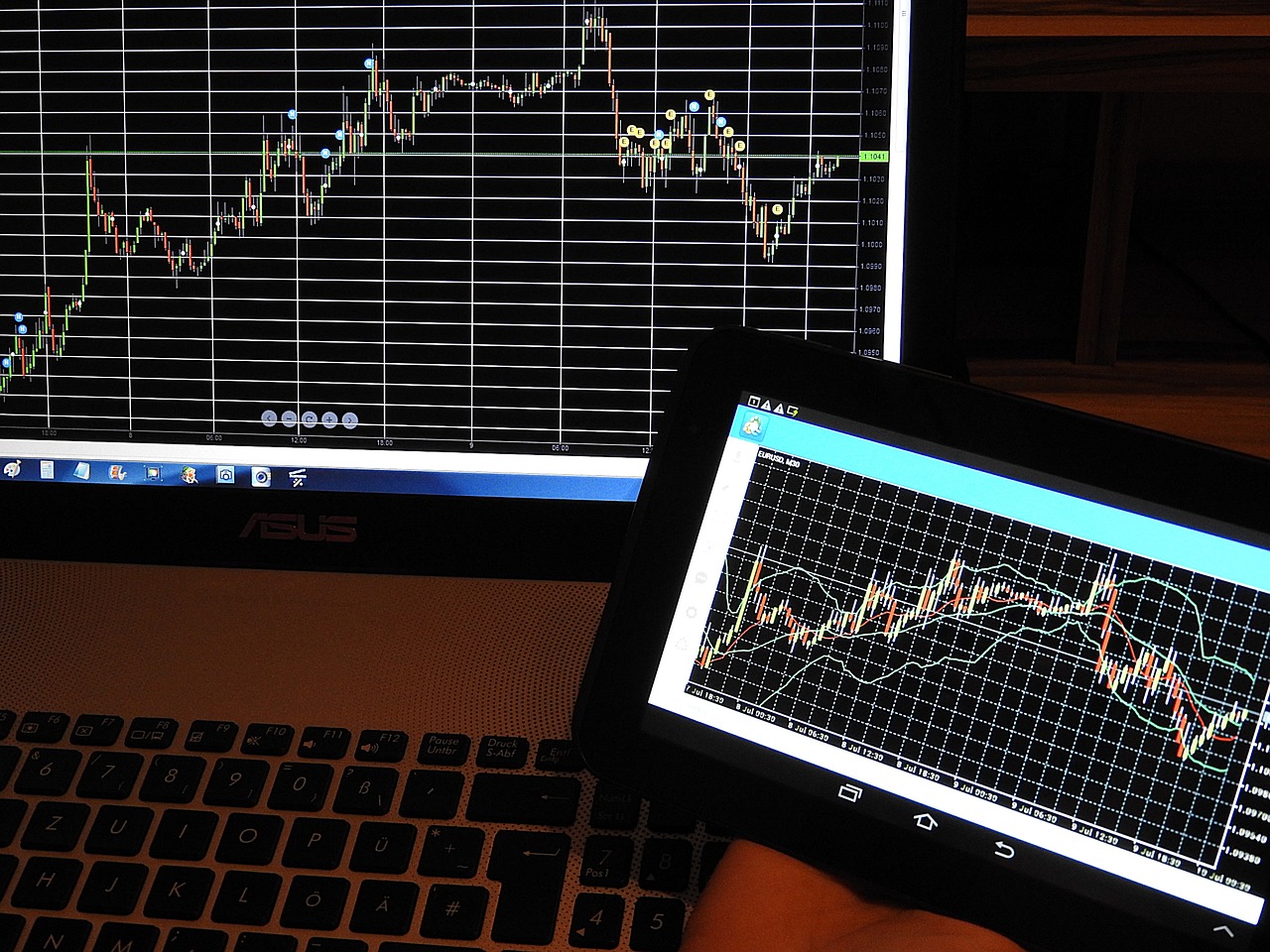
Practical Applications of Technical Analysis
Technical analysis isn't just a theoretical exercise; it has real-world applications that can significantly enhance trading strategies. Whether you're a novice trader or a seasoned investor, understanding how to apply technical analysis can be the key to unlocking your potential in the financial markets. By analyzing price movements and market trends, traders can make informed decisions that lead to profitable outcomes.
One of the most compelling aspects of technical analysis is its versatility. It can be applied across various financial instruments including stocks, forex, commodities, and cryptocurrencies. This adaptability allows traders to utilize the same principles and methodologies regardless of the market they are engaging with. For instance, day traders often rely on technical analysis to make rapid decisions, while long-term investors use it to identify potential entry and exit points over extended periods.
In the fast-paced world of day trading, where every second counts, technical analysis becomes a trader's best friend. Traders use a variety of technical indicators to make split-second decisions. For example, moving averages can help identify the overall trend, while the Relative Strength Index (RSI) can signal overbought or oversold conditions. By employing these tools, day traders can enter and exit positions with confidence, maximizing their profit potential.
On the other hand, long-term investors can also benefit from technical analysis, albeit in a different manner. They often use it to identify strong support and resistance levels, which can indicate optimal points for buying or selling. For example, if a stock consistently bounces off a certain price level, that level may serve as a strong support point, suggesting a buying opportunity. Conversely, if a stock struggles to break through a certain price level, that may indicate a resistance point, suggesting it might be time to sell.
Here's a quick overview of how technical analysis can be utilized in both day trading and long-term investment strategies:
| Application | Day Trading | Long-Term Investment |
|---|---|---|
| Focus | Short-term price movements | Long-term trends and patterns |
| Tools | Indicators like RSI, MACD, and moving averages | Support/resistance levels, trend lines |
| Time Frame | Minutes to hours | Days to months or years |
| Risk Management | Quick stop-loss orders | Strategic entry and exit points |
In conclusion, the practical applications of technical analysis are vast and varied. By mastering this skill, traders can navigate the complexities of the market with greater ease and confidence. Whether you're making quick trades or planning for the long haul, understanding the nuances of technical analysis can empower you to make more informed, strategic decisions.
- What is the main purpose of technical analysis? The main purpose of technical analysis is to forecast future price movements based on historical price data and market trends.
- Can technical analysis be used for all financial markets? Yes, technical analysis can be applied to various markets including stocks, forex, commodities, and cryptocurrencies.
- What are some common technical indicators? Common technical indicators include moving averages, RSI, MACD, and Bollinger Bands.
- Is technical analysis reliable? While technical analysis can provide valuable insights, it is not foolproof and should be used in conjunction with other analysis methods for better accuracy.

Day Trading Strategies
Day trading is an exhilarating approach to the financial markets, where traders capitalize on small price fluctuations within a single trading day. It’s not just about luck; it requires a solid understanding of technical analysis and a well-crafted strategy. One of the most vital aspects of day trading is the ability to make quick decisions based on real-time data. Traders often rely on a blend of technical indicators, market news, and price action to guide their trades. But what exactly are some effective strategies that day traders employ?
First and foremost, many day traders utilize the scalping strategy. This method involves making numerous trades throughout the day, aiming to profit from small price changes. Scalpers typically hold positions for a few seconds to a few minutes, making quick gains that can add up over time. This strategy requires a keen eye on the market and a robust trading platform that can execute orders rapidly. Imagine trying to catch a fleeting shadow; that’s how quick scalping can be!
Another popular strategy is the momentum trading strategy. Traders using this approach look for stocks that are moving significantly in one direction on high volume. They enter trades when they believe the momentum will continue, riding the wave until they see signs of reversal. This strategy is akin to surfing; you want to catch the wave at just the right moment. However, it’s crucial to set stop-loss orders to minimize potential losses if the tide turns unexpectedly.
Moreover, the breakout strategy is a favorite among day traders. This strategy focuses on identifying key levels of support and resistance. When the price breaks through these levels, traders jump in, anticipating that the price will continue in the breakout direction. For instance, if a stock consistently bounces off a resistance level and finally breaks through, traders might see this as a signal to buy, expecting the price to surge higher. It’s like waiting for a dam to burst; once it does, the water flows freely!
To further illustrate these strategies, here’s a brief table summarizing the key aspects:
| Strategy | Description | Key Focus |
|---|---|---|
| Scalping | Making multiple trades for small profits | Quick execution and high volume |
| Momentum Trading | Trading stocks moving significantly in one direction | Volume and price action |
| Breakout Strategy | Trading when price breaks support or resistance | Key levels and price continuation |
Additionally, a significant part of day trading strategies involves risk management. Successful day traders know that protecting their capital is just as important as making profits. They often set strict rules on how much of their trading capital they are willing to risk on each trade, commonly adhering to the 1% rule. This means that they will not risk more than 1% of their total trading account on a single trade. By doing this, they can survive losing streaks and stay in the game longer, just like a seasoned athlete who knows when to play it safe to avoid injury.
In conclusion, day trading is not merely a game of chance; it’s a skill that combines technical analysis with a well-defined strategy. Whether you’re scalping, riding momentum, or waiting for breakouts, it’s essential to stay disciplined and manage your risks effectively. As with any endeavor, the key to success lies in continuous learning and adapting to the ever-changing market landscape.
- What is the best time frame for day trading? Most day traders focus on shorter time frames, such as 1-minute to 15-minute charts, to capture quick price movements.
- Do I need a lot of capital to start day trading? While having a larger capital can provide more flexibility, many traders start with a few hundred dollars, especially with the rise of commission-free trading platforms.
- How do I manage risk in day trading? Setting stop-loss orders and adhering to the 1% rule are essential for managing risk and protecting your capital.

Long-Term Investment Insights
When it comes to long-term investing, technical analysis is like having a roadmap that guides you through the often-turbulent waters of the financial markets. Imagine setting sail on a vast ocean; without a compass or a map, you might find yourself lost amid the waves. Similarly, technical analysis equips investors with the tools to navigate the stock market over extended periods, helping them identify potential entry and exit points. By analyzing historical price movements and trends, investors can make informed decisions that align with their long-term financial goals.
One of the key advantages of using technical analysis for long-term investments is its ability to reveal underlying market trends. For instance, when an investor observes a consistent upward trend in a stock's price over several months or years, it may signal a strong buying opportunity. Conversely, spotting a downward trend can prompt an investor to reconsider their position. This is where the concept of support and resistance levels becomes essential. Support levels indicate where prices tend to stop falling and bounce back, while resistance levels show where prices often struggle to rise above. Recognizing these levels can significantly enhance an investor's timing and decision-making.
Moreover, long-term investors often utilize various technical indicators to bolster their strategies. For example, the Moving Average is a popular tool that smooths out price data to help identify trends over time. A simple moving average (SMA) calculates the average price over a specific period, providing a clearer view of the stock's trajectory. Investors might look for crossovers between short-term and long-term moving averages as potential buy or sell signals. Additionally, the Relative Strength Index (RSI) can indicate whether a stock is overbought or oversold, further assisting investors in making strategic decisions.
To illustrate how technical analysis can be applied in long-term investment strategies, consider the following example:
| Investment Strategy | Indicators Used | Expected Outcome |
|---|---|---|
| Buy and Hold | SMA, RSI | Long-term appreciation of stock value |
| Trend Following | Moving Averages, MACD | Capitalizing on upward trends |
| Value Investing | Support/Resistance, Volume Analysis | Identifying undervalued stocks |
In summary, while technical analysis is often associated with short-term trading, its applications in long-term investment strategies are equally impactful. By understanding market trends, utilizing key indicators, and recognizing support and resistance levels, investors can enhance their decision-making process. This analytical approach not only helps in identifying potential opportunities but also aids in managing risks effectively. So, whether you're a seasoned investor or just starting out, incorporating technical analysis into your long-term strategy could be the key to unlocking your financial potential.
- What is the primary purpose of technical analysis in long-term investing?
Technical analysis helps investors identify trends, potential entry and exit points, and manage risks over extended periods. - How do support and resistance levels affect long-term investment decisions?
Support and resistance levels indicate where prices may reverse, helping investors make informed decisions about buying and selling. - Can technical analysis be used alongside fundamental analysis?
Absolutely! Many investors find that combining both methods provides a more comprehensive view of the market. - What are some common technical indicators for long-term investing?
Common indicators include Moving Averages, Relative Strength Index (RSI), and MACD.
Frequently Asked Questions
- What is technical analysis?
Technical analysis is a method used to evaluate and forecast the future price movements of financial assets by analyzing historical price data and market trends. It focuses on price charts and various indicators to make informed trading decisions.
- How do price charts help in technical analysis?
Price charts are essential tools in technical analysis as they visually represent price movements over time. Different types of charts, such as line charts, bar charts, and candlestick charts, provide unique insights into market trends and help traders identify potential entry and exit points.
- What are the most commonly used technical indicators?
Some of the most popular technical indicators include Moving Averages, Relative Strength Index (RSI), Bollinger Bands, and MACD. These indicators help traders analyze market momentum, identify trends, and make strategic trading decisions.
- What are support and resistance levels?
Support and resistance levels are key concepts in technical analysis. Support levels indicate a price point where an asset tends to stop falling and may bounce back up, while resistance levels indicate a price point where an asset tends to stop rising and may reverse downward. Understanding these levels can help traders predict potential price reversals.
- Can technical analysis be used for long-term investments?
Absolutely! While technical analysis is often associated with short-term trading strategies like day trading, it can also provide valuable insights for long-term investments. Investors can use it to identify optimal entry and exit points over extended periods, helping to enhance their overall investment strategy.
- What are the limitations of technical analysis?
Despite its usefulness, technical analysis has limitations. It primarily relies on historical data and may not account for unexpected market events or changes in fundamentals. Therefore, it's often recommended to combine technical analysis with other forms of analysis, such as fundamental analysis, for more accurate predictions.
- How does market psychology influence technical analysis?
Market psychology plays a crucial role in technical analysis. Trader emotions, behaviors, and market sentiment can significantly influence price movements. Understanding these psychological factors can help traders better interpret charts and indicators, leading to more informed trading decisions.







